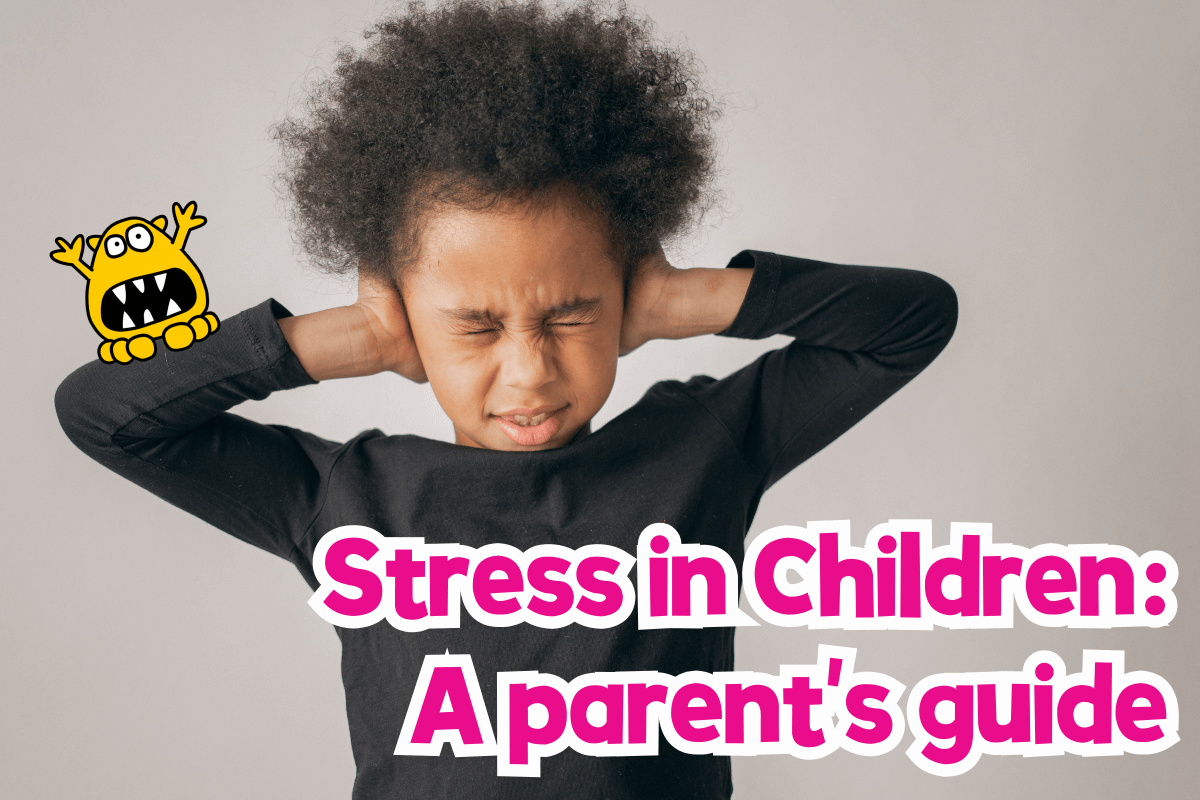Stress in Children: What Parents Need to Know

Worried your child might be stressed? Stress isn’t just something grown-ups experience – children feel stress too. From school pressures to friendship struggles, their young minds can be carrying the weight of big worries! They might not say “I’m stressed,” but they often show it – think tummy aches, tantrums, sleepless nights or sudden clinginess.
This blog is a practical guide for parents to understand how stress can show up in children, possible causes, and how to support your child with simple, everyday strategies that really help – whether it’s April’s Stress Awareness Month or just another busy week.
How Stress Shows Up in Children: Common Signs to Watch For
Children’s emotional wellbeing affects every part of their life – their ability to focus and learn, their confidence, and their friendships. But children don’t always have the words to say what they’re feeling. Stress or feeling overwhelmed, often shows up in their behaviour instead:
- Tummy aches and headaches with no obvious cause
- Trouble sleeping or frequent nightmares
- More clingy, teary or irritable than usual
- Angry outbursts or emotional shutdowns
Spotting these signs is the first step in helping children understand and manage their emotions and to help them build lifelong coping skills. Stress Awareness Month is a great chance to pause and think about what’s really going on beneath the surface for our children – and how we can support them through it.
What Causes Stress in Children? Key Triggers to Know
While adults may worry about bills or deadlines, children face different pressures. Some of the most common stress triggers include:
- School-related stress: Homework, tests, learning new skills and keeping up with classmates.
- Friendship worries: Arguments, feeling left out or struggling to make friends.
- Big life changes: Moving house, a new sibling or a change in routine.
- Performance pressure: Whether it’s a sports competition, a spelling test or a school play, children often feel pressure to ‘do well.’
Knowing what’s behind the stress can help you support your child more effectively.
How to Help a Stressed Child: Practical Strategies That Work
The good news is there are plenty of ways to support children in building resilience and managing their stress. Here are a few practical ideas to start with:
1. Create a Safe Space to Talk
Ask gentle, open-ended questions: “What’s been tricky lately?” or “What helps you feel calm when you’re worried?” Avoid rushing to fix things – just listening is powerful.
2. Normalise Feelings
Let children know it’s completely normal to feel worried, upset or unsure sometimes. Share examples of your own feelings too.
3. Build a Calm-Down Toolkit Together
Simple breathing exercises, calming colouring, or sensory play can help children self-regulate. Practise these when they’re calm so they’re ready to use them when stress hits.
4. Use Stress-Busting Activities
From dancing wildly to colouring mindfully, active and creative play can help release pent-up stress. Our blog Fun Stress-Busters for Kids is packed with low-prep ideas to try.
5. Keep a Healthy Balance
While it’s tempting to squeeze in lots of extra-curricular activities, homework or practice, what children often need most is time to rest, play and recharge. A balanced routine that includes plenty of downtime supports emotional resilience and helps children cope better with everyday pressures.
More Support for Children’s Mental Health and Wellbeing
- Fun Stress-Busters for Kids – Easy games and activities that help children release stress through movement, creativity, and laughter.
- Supporting Your Child Through Exam Stress – From phonics screenings to SATs, this blog covers how to help your child feel confident and calm about tests.
- Building Resilience in Children – Discover easy ways to help children bounce back from setbacks and build everyday confidence, plus a free printable packed with fun, resilience-boosting activities.
- Mindful Activities for Kids – From breathing games to calming colouring, explore creative ideas to help children slow down and manage big feelings – includes free mindful colouring pages to get started.
- Creative Ways to Express Emotions – Help your child understand, name and share their feelings with playful activities and storytelling ideas – download your free ‘finding feelings’ poster too.
Explore Stress-Busting Tools on Busy Things
Busy Things has stress-relieving tools built in, including calming colouring, movement games, journaling prompts and more – perfect for helping children explore feelings and build coping skills through playful activities.
Want to give it a go? Take a Busy Things free trial and discover a world of playful learning and emotional support.
Let’s Talk About It – Every Month, Not Just in April
Whether it’s Stress Awareness Month or just another packed school term, let’s remind children that it’s okay to feel stress – and there are lots of ways to work through it together.